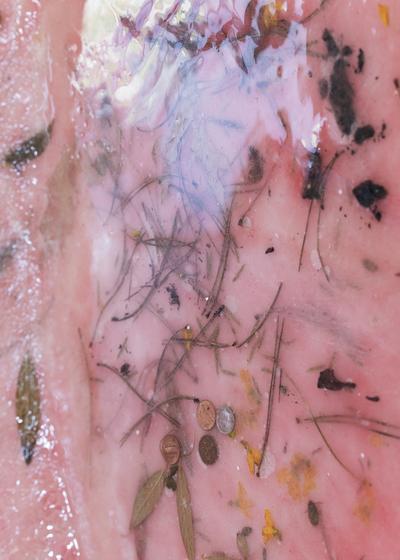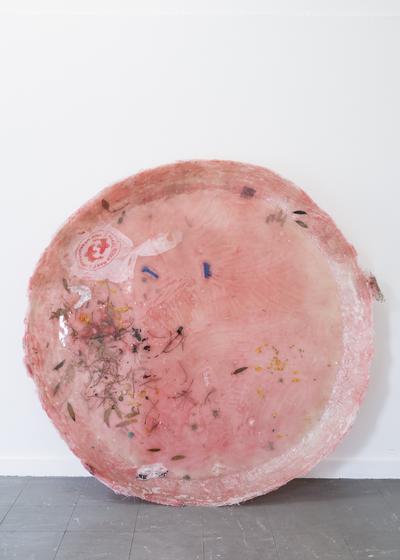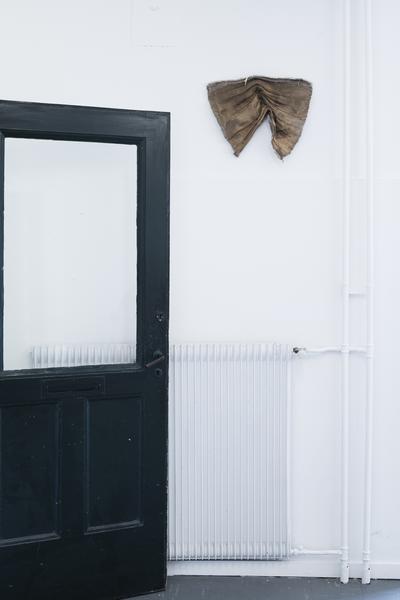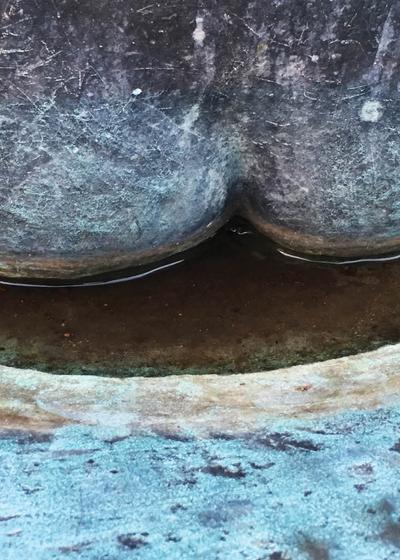Våd af dug
Duo show with Moa Alskog @ Delfi, Malmö, 2019.
Wet with Dew
Is the human dominion of the earth the fault of God, who on the sixth day after creating heaven and earth created the human, blessed her and said: ‘Be fruitful, and multiply, and replenish the earth, and subdue it: and have dominion over the fish of the sea, and over the fowl of the air, and over every living thing that moveth upon the earth’? Or is our complicated relation with other species the fault of Descartes who separated the body from the mind, an idea that prepared the way of the view of ‘nature’ as dead and earth as a resource for the human to exploit, in the same way as the earthbound woman for the man. Or is it just because we do not have any self-awareness of the fact that we continue the ‘…wasting and draining of the last bit of energy, only to produce heaps and heaps of things, —things ugly, things harmful, things useless, and at the best largely unnecessary’ as Voltairine de Cleyre wrote in her 1910 essay ‘The dominant idea’? Is that also the reason why we cannot see outside the room and worship the natural sciences to such a degree that makes us repress other things: things we cannot see, measure or weigh such as the smallest and the biggest, death, consciousness, eternity and caretaking?
Every day is a doomsday for several species of fish, birds, plants or insects. They are more complex than we think; it is not only humans who feel pain, are conscious, enjoy sex, communicate. We are connected like the water that circulates through our bodies. The container was the first cultural invention, not the sword according to Ursula le Guin. Different lights make different things appear, said Jonna Bornemark and Judith Butler stated that repeated acts makes the sex, and gender play ‘can constitute highly complex and structured production of desire’. Think circular, repetitive, spiral-like, not treelike progressive.
Cecilie Skov and Moa Alskog curated a series of five exhibitions with a focus on new Materialism, entitled ‘Sig mig at tingene taler’ in 2014. They have engaged in a continuous conversation about art, literature, feminism and ecology since then. In the exhibition ‘Wet as dew’, Cecilie presents sculptures inspired by the container, the body of water and the puddle as a stage of water in circulation. For her part, Moa is exhibiting drawings she made inspired by the frogs’ symbolic metamorphoses – from symbolizing fertility, birth and life in ancient Egypt to the frog becoming the devil’s henchman and a symbol of female promiscuity in the Middle Ages.
The exhibition is generously supported by the Danish Arts Foundation and Malmö Stad Kulturstöd.





